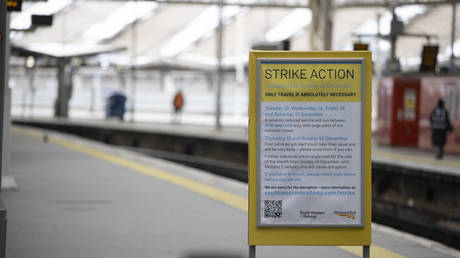
Official figures show a sharp rise in the number of working days lost over labor disputes
The UK has been experiencing its most widespread public-sector strikes in more than a decade, data released by the Office for National Statistics (ONS) on Tuesday shows. In October alone, 417,000 working days in the public sector were lost.
This was overshadowed only by November 2011, when nearly a million workers walked out over austerity measures. The October figure dramatically outpaced the 209,000 registered in September, when some labor actions were postponed due to the death of Queen Elizabeth II.
The five-month period of June-October saw more than 1.1 million working days lost, the most in the UK since 1990. The figures are expected to grow even further, as strikes have continued throughout Britain in recent weeks, with a further 40,000 railway workers beginning their latest round of walkouts on Tuesday.
The latest ONS figures also revealed a record-breaking wage disparity between public- and private-sector workers. In the three-month period to October, the wages of some 5.8 million state workers grew only by 2.7%, while those in the private sector enjoyed a rise of around 6.9%.
“Outside of the height of the pandemic period, this is the largest growth rate seen for the private sector and is among the largest differences between the private sector and public sector growth rates we have seen,” the ONS said.
UK Finance Minister Jeremy Hunt has repeatedly defended the government’s policy of holding back pay rises for the public sector, insisting that doing so is necessary to tackle soaring inflation, which ran at 11.1% in October.
“My number one responsibility as chancellor, the number one job of the government, is to make sure that we tackle inflation, and that will deal – I think – with the underlying anger that many people feel,” Hunt told Sky News on Monday.




